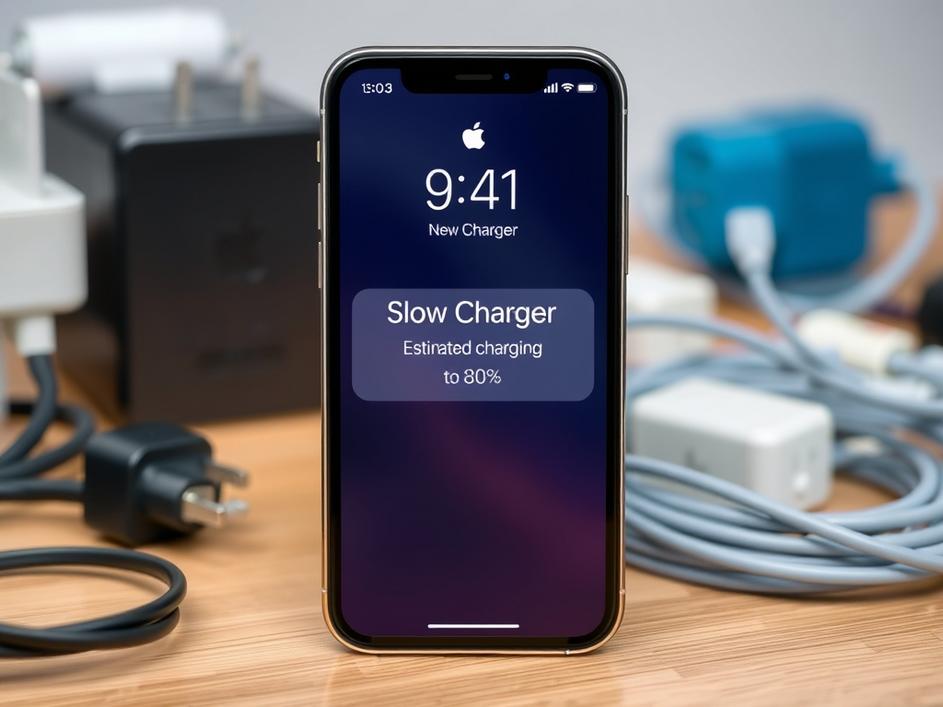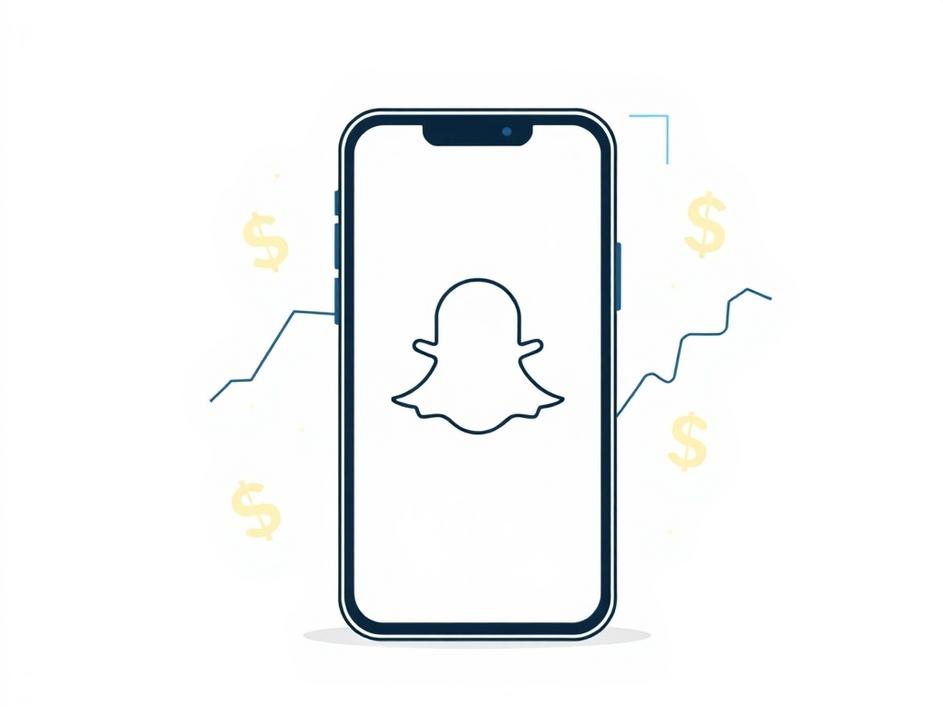


We are a digital agency helping businesses develop immersive, engaging, and user-focused web, app, and software solutions.
2310 Mira Vista Ave
Montrose, CA 91020
2500+ reviews based on client feedback

What's Included?
ToggleYou plug in your iPhone, expecting it to just charge, right? For years, that’s been the routine. But if you’re on a newer iOS version (like iOS 16 or later), you might have noticed something new. Beyond the familiar battery icon, your lock screen might now show an estimated time to reach 80% charge. You might even see a “Slow Charger” alert. This isn’t just a random message; your iPhone is trying to tell you something about its power source. It can be confusing, maybe even annoying, when you just want your phone charged. So, what’s really happening? And should you care? Let’s break down this new feature and what it means for your daily charging.
So, let’s talk about this alert. Apple added a feature in recent iOS updates (starting with iOS 16) to give you more transparency about charging. When you plug in your phone, especially if the battery is low, your lock screen can now show an estimated time to reach 80% charged. This is helpful if you need a quick top-up. The “Slow Charger” alert is the main event here. It appears when your iPhone senses that your power adapter, cable, or even the outlet isn’t supplying enough power (wattage) for optimal charging speed. It’s not saying anything is broken. Instead, it’s just letting you know things could be faster. Imagine your car preferring premium fuel; it’ll still run on regular, but not quite as efficiently.
That “slow” label isn’t just a random complaint. It’s all about wattage, the measure of electrical power. New iPhones, especially Pro models, can handle quick charging – often 20W, 25W, or more, with the right adapter and cable. Many older chargers, or tiny cubes, might only give 5W or 10W. Even a laptop’s USB port usually offers just 7.5W. When your iPhone expects 20W but gets 5W, it notices. The phone’s software knows what it needs for fast charging. If that power isn’t there, it flags it. Also, it’s smart about battery health. Charging too fast near 100% can wear down the battery, so the phone manages power to protect it. This alert is part of that battery care plan, telling you when the power isn’t optimal.
So, you see the “Slow Charger” alert. Is this something to panic about? Most likely, no. For most people, a slower charge isn’t a disaster. If you plug your phone in overnight, whether it takes two hours or four hours to hit 100% doesn’t matter much. You’ll wake up to a fully charged phone either way. The real impact is on convenience. If you’re running out the door with only 20 minutes to charge, a “slow charger” means significantly less battery life than with a fast charger. This alert is basically a heads-up that you might be missing out on faster charging times, especially during quick top-ups. It’s not necessarily harming your battery; a slower, steadier charge can even be seen as gentler in the long run, though modern fast charging is designed to be safe too. It’s more about meeting your expectations for speed.
If you’re tired of that “Slow Charger” message and want to speed things up, there are a few easy checks. First, look at your power adapter. Is it an old, small cube, or a newer, higher-wattage brick? Apple recommends at least a 20W USB-C adapter for fast charging. Second, check your cable. Not all cables are created equal. A damaged or old, low-quality one might limit power flow. Make sure you’re using a certified MFi (Made For iPhone/iPad) cable or a quality USB-C to Lightning cable. Third, consider your power source. Are you plugging into a wall outlet, a computer’s USB port, or a car charger? Wall outlets usually provide the most consistent power. If you’re using a power bank, ensure it has a high-wattage output. Swapping out one of these components often resolves the “slow charger” alert.
From my perspective, this “Slow Charger” alert is more than just a technical notification; it’s Apple’s way of gently educating users and nudging them towards better charging habits. In an era where we rely so heavily on our devices, Apple knows that fast, efficient charging is key to a smooth user experience. Many people might not realize that their old charger isn’t pulling its weight with their new, power-hungry iPhone. This alert brings that information right to the forefront. It also likely plays into Apple’s broader strategy of optimizing battery health and longevity. By informing users when charging isn’t optimal, they’re empowering people to make small changes that could, over the lifespan of the device, contribute to a healthier battery. It’s not a scolding, but an invitation to get the most out of your device and its accessories. It improves transparency and helps users understand the sometimes-complex world of power delivery.
This new alert is probably just the beginning of more transparency in how our devices manage power. As phones become more advanced and batteries evolve, understanding charging nuances will only become more important. We might see even more detailed info about battery health, charging cycles, and power consumption directly on our devices. Apple, along with other tech companies, seems to be moving towards giving users more control and insight into their phone’s vital functions. So, next time you see that “Slow Charger” message, don’t just dismiss it. See it as your iPhone helping you understand its needs better. It’s a small detail, but one reflecting a growing trend in personal tech: making the invisible, visible. This helps us be smarter consumers and get the most out of our expensive gadgets.
So, the “Slow Charger” alert on your iPhone isn’t a bug or a dire warning. It’s a smart feature designed to give you more insight into your device’s charging. It tells you when your charging setup isn’t letting your phone power up at its fastest potential. While it might not matter for an overnight charge, it can make a big difference when you need a quick boost. By understanding what triggers this alert and making a few simple adjustments – like upgrading your adapter or cable – you can ensure your iPhone charges as efficiently as possible. It’s about more than speed; it’s about getting the most out of your technology for a smoother, more reliable experience every day. Happy charging!



Leave a reply